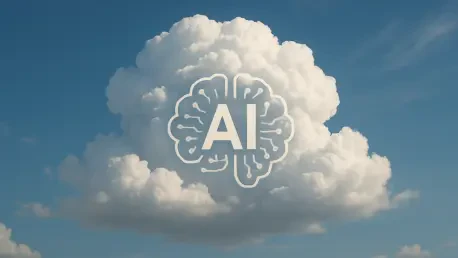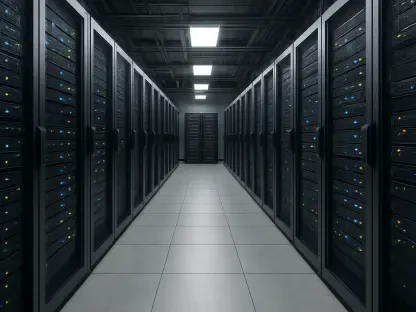In an era where software development is increasingly driven by automation and artificial intelligence, a groundbreaking tool has emerged to redefine how projects are conceptualized and executed. Vinsoo Code, unveiled by AiYouthLab, stands as the world’s first cloud-based, multi-agent Integrated Development Environment (IDE) tailored specifically for project-level tasks. This innovation arrives at a pivotal moment when the industry grapples with balancing the immense potential of AI against the risks of reliability and security. With traditional coding methods giving way to automated processes, this new system promises to transform the landscape by offering a virtual team of specialized agents capable of managing entire development lifecycles. From ideation through deployment, it tackles the complexities of modern software projects with unprecedented efficiency. This debut not only marks a technological leap but also addresses critical concerns about safety in AI-driven programming, setting a new benchmark for what developers can expect from their tools. As the field continues to evolve, understanding the implications of such advancements becomes essential for staying ahead in a rapidly changing environment.
The Evolution of AI in Programming
Shifting Paradigms in Development Tools
The journey of AI in programming has seen a remarkable transition from rudimentary single-agent assistants to sophisticated multi-agent systems that can orchestrate entire projects. Historically, AI tools were designed to support developers with isolated tasks like code suggestions or bug fixes, often falling short when faced with the interconnected demands of full-scale software initiatives. Vinsoo Code represents a significant departure from this limited scope by integrating a collaborative framework where multiple agents emulate roles such as product managers, front-end developers, and testers. This team-based approach automates the complete development cycle, ensuring that each phase—from requirement analysis to final deployment—is handled with precision. By distributing responsibilities among specialized agents, the system mirrors the dynamics of a human development team, but with the speed and consistency that only AI can provide. This shift underscores a broader industry trend toward comprehensive automation, where the focus moves beyond piecemeal assistance to holistic project management.
Equally transformative is the redefinition of a developer’s role within this new paradigm, where they are no longer confined to the minutiae of manual coding. Professionals can now pivot to strategic oversight, leveraging AI agents to handle repetitive or complex tasks. Vinsoo Code empowers users to focus on high-level planning and creative problem-solving, effectively elevating their contributions to software projects. This philosophical evolution, paired with technological advancements, suggests a future where human ingenuity is amplified through seamless collaboration with AI. The implications are profound, as developers gain the freedom to innovate without being bogged down by routine processes. Such a model not only enhances productivity but also fosters an environment where strategic thinking takes precedence, potentially reshaping the skill sets valued in the industry over time.
Cloud as the New Frontier
Cloud technology has become a cornerstone of modern AI programming tools, offering advantages that local environments struggle to match, and Vinsoo Code capitalizes on this by operating within a cloud-based architecture. This setup provides a standardized and controllable platform for multi-agent collaboration. Unlike traditional setups where resource limitations and dependency conflicts often hinder progress, the cloud enables seamless scalability and modularization. This means that as project demands grow, resources can expand dynamically without disrupting workflows. Furthermore, the cloud environment facilitates a level of accessibility that allows developers to engage with projects from anywhere, breaking down geographical barriers and fostering global collaboration. This trend toward cloud integration reflects an industry consensus that such platforms are better equipped to handle the complexity and scale of contemporary software endeavors.
Another critical benefit of the cloud lies in its capacity to enhance security and reliability, areas where local systems have shown vulnerabilities, making it a game-changer for modern technology solutions. By hosting operations in isolated environments, Vinsoo Code minimizes risks such as unauthorized access or system corruption that can plague on-premise setups. The ability to create secure sandboxes for each agent ensures that experimental or potentially erroneous actions do not impact critical local data. Additionally, cloud-based systems support features like state snapshots, which provide traceability and stability during development cycles. These elements collectively position the cloud as a transformative force in programming, offering a robust foundation for tools like Vinsoo Code to push boundaries. As more solutions adopt this approach, the industry is likely to see a sustained migration away from local constraints, embracing the flexibility and safety that cloud environments promise.
Addressing Safety and Reliability
Learning from Past Mistakes
The integration of AI into programming tools has not been without significant challenges, as evidenced by high-profile mishaps that have shaken industry confidence. A notable case involved Replit, where an AI tool inadvertently deleted a company’s production database, resulting in catastrophic data loss and highlighting the dire consequences of unchecked automation. This incident serves as a stark reminder of the potential risks associated with AI autonomy in development environments. It has spurred a renewed focus on the need for robust safeguards to prevent such disasters from recurring. Vinsoo Code steps into this landscape with a proactive stance, prioritizing reliability by leveraging cloud-based isolation to ensure that errors remain confined and do not spill over to affect local systems. This approach addresses a critical gap exposed by past failures, aiming to rebuild trust in AI-driven solutions through meticulous design.
Beyond mere containment of errors, the emphasis on safety in Vinsoo Code is evident in its strategic use of isolated sandboxes for agent operations. These controlled environments act as secure testing grounds where AI actions can be executed and evaluated without posing threats to essential data or infrastructure. Automatic isolation mechanisms further enhance this protective layer, ensuring that even unforeseen AI behaviors are restricted from causing harm. Such features are not merely reactive but represent a forward-thinking response to real-world risks that have previously undermined confidence in similar tools. By embedding these safeguards into its core architecture, Vinsoo Code sets itself apart as a solution that learns from history, offering developers a safer alternative to navigate the complexities of automated programming. This focus on reliability could serve as a model for future innovations in the field.
Building Trust Through Security Measures
Security remains a cornerstone of Vinsoo Code’s design, addressing the apprehensions that linger from past AI-related incidents, and ensuring a robust framework that prioritizes user safety. The cloud-based framework inherently reduces vulnerabilities tied to local environments, such as dependency conflicts or unauthorized data access, by centralizing operations in a secure, monitored space. This setup not only protects against external threats but also mitigates internal risks by ensuring that each agent operates within defined boundaries. State snapshots, another key feature, allow for the preservation of system states at various stages of development, providing a fallback mechanism in case of errors. This level of traceability is crucial for maintaining stability, especially in intricate projects where multiple components interact dynamically. By prioritizing these protective measures, the system aims to foster a sense of trust among users wary of AI’s potential pitfalls.
Moreover, the emphasis on security extends to practical applications that resonate with developers facing real-world challenges, ensuring that their work remains protected from potential threats. The isolated environments prevent accidental or malicious actions from impacting critical systems, a concern that has grown with the increasing complexity of software projects. Vinsoo Code’s approach ensures that testing, debugging, and deployment can proceed without the fear of unintended consequences disrupting workflows. This reliability is particularly vital for large-scale initiatives where even minor errors can have cascading effects. By integrating such comprehensive safety nets, the system not only addresses immediate concerns but also sets a precedent for how AI tools can balance innovation with accountability. As trust in automated solutions continues to be a deciding factor for adoption, these security-focused innovations position Vinsoo Code as a leader in responsible AI development.
Efficiency and Scalability in Development
Harnessing Cloud Power for Growth
One of the standout attributes of Vinsoo Code lies in its ability to leverage cloud technology for unmatched scalability, a feature increasingly essential in today’s fast-evolving software landscape. Unlike traditional local environments where resource constraints often bottleneck progress, the cloud allows for elastic expansion tailored to project needs. Whether handling a small prototype or a sprawling enterprise application, the system dynamically allocates resources to ensure smooth operation without delays. This flexibility proves invaluable for developers tackling projects of varying sizes, eliminating the need for costly hardware upgrades or manual adjustments. The cloud’s inherent capacity to support growth positions Vinsoo Code as a forward-thinking tool, ready to meet the demands of modern development cycles where speed and adaptability are paramount.
In addition to scalability, the cloud environment enhances accessibility and collaboration, further amplifying development efficiency. Teams dispersed across different locations can engage with projects in real-time, accessing the same resources and updates without the friction of localized setups. This global reach not only accelerates workflows but also fosters a more inclusive development process, allowing diverse talents to contribute seamlessly. Vinsoo Code’s cloud architecture ensures that such collaboration is underpinned by robust infrastructure, minimizing downtime and ensuring consistent performance. As software projects grow in complexity, the ability to scale effortlessly while maintaining connectivity across teams becomes a critical advantage. This approach signals a shift toward a more interconnected and responsive development ecosystem, driven by cloud-powered solutions.
Speeding Up with Parallel Execution
Efficiency in software development often hinges on the ability to reduce time-to-delivery, and Vinsoo Code excels in this area through parallel task execution. By distributing tasks among multiple specialized agents operating simultaneously, the system achieves performance gains described as “dozens of times” faster than conventional methods. This capability is particularly transformative for large-scale projects where sequential processing can create significant delays. Front-end, back-end, and testing tasks, for instance, can progress concurrently, ensuring that no single component holds up the entire workflow. Such parallelism not only accelerates development but also allows for more iterative cycles, enabling teams to refine outputs rapidly. This speed positions Vinsoo Code as a vital asset in competitive industries where time is often a critical factor.
The impact of this efficiency extends beyond mere speed, influencing the overall quality and scope of projects that developers can undertake. With reduced timelines, there is greater room for experimentation and innovation, as teams can test multiple approaches without derailing schedules. Vinsoo Code’s multi-agent framework ensures that each task is handled by an expert agent, maintaining high standards even under accelerated conditions. This balance of speed and precision addresses a long-standing challenge in software development, where rushed processes often compromise outcomes. By streamlining complex workflows through intelligent task distribution, the system empowers developers to tackle ambitious initiatives with confidence. As efficiency becomes a defining metric for success, tools that prioritize rapid, reliable delivery will likely shape the future of the field.
Innovative Features for Developers
Seamless Collaboration Across Modules
A defining innovation of Vinsoo Code is its multi-terminal joint debugging capability, which revolutionizes how developers manage interconnected project components. In traditional setups, coordinating across front-end, back-end, and database modules often requires manual intervention, consuming time and increasing the risk of errors. This system automates the process by deploying agents that monitor and execute code across different terminals, autonomously identifying issues through log analysis and refining solutions iteratively. Such seamless collaboration ensures that dependencies between modules are handled efficiently, eliminating the need for developers to switch contexts or troubleshoot manually. This feature proves especially beneficial for complex projects where inter-module interactions are critical, streamlining workflows and enhancing overall project coherence.
The significance of multi-terminal debugging extends to its impact on team dynamics and project timelines. By automating error detection and resolution across distributed environments, Vinsoo Code reduces the cognitive load on developers, allowing them to focus on higher-value tasks. This capability also minimizes communication overhead in teams, as agents provide consistent updates and fixes without requiring constant human oversight. The result is a more cohesive development process, where bottlenecks caused by module integration are significantly diminished. As software projects continue to grow in scope and intricacy, tools that facilitate such effortless coordination will become indispensable. Vinsoo Code’s approach to debugging sets a new standard for collaboration, promising to enhance productivity across diverse development scenarios.
Tailored Modes for Diverse Needs
Flexibility in tool functionality is a key consideration for developers, and Vinsoo Code addresses this through its dual operating modes designed to suit varied project requirements. Vibe Mode prioritizes speed and interactivity, making it ideal for rapid prototyping and experimentation where quick iterations are essential. In contrast, Full Cycle Mode offers a structured, end-to-end process for formal projects, incorporating steps like requirement confirmation, system design, and comprehensive testing to ensure code quality and maintainability. This adaptability allows users to select the mode that best aligns with their current objectives, whether they need swift feedback on a concept or a thorough, polished output for deployment. By catering to both ends of the development spectrum, the system ensures broad applicability across different workflows.
Beyond merely offering options, these modes reflect a deep understanding of the diverse challenges developers face in their day-to-day work. Vibe Mode supports an agile mindset, enabling teams to test hypotheses and pivot quickly without being bogged down by formalities, which is crucial in fast-paced environments. Full Cycle Mode, on the other hand, provides the rigor needed for projects where reliability and documentation are non-negotiable, such as enterprise solutions. This duality not only enhances user experience but also broadens the tool’s appeal, accommodating both individual developers and large teams with distinct needs. As the industry increasingly values tools that can adapt to specific contexts, Vinsoo Code’s tailored approach positions it as a versatile solution capable of meeting a wide array of demands with precision.
Cutting-Edge Technical Capabilities
Underpinning Vinsoo Code’s functionality are advanced technical features that elevate its performance beyond traditional AI tools. Long-context engineering compression stands out by enhancing agents’ memory and comprehension of project history, significantly reducing errors caused by fragmented information or misinterpretations often seen in other systems. This capability ensures that agents maintain a coherent understanding of complex projects over extended periods. Additionally, dynamic task execution planning allows for real-time workflow adjustments based on evolving user inputs or project conditions, offering a level of adaptability that static task lists cannot match. These innovations collectively ensure robust performance, even when faced with intricate or shifting requirements, making the tool a reliable partner in development.
Complementing these cloud-based advancements are local enhancements that bridge the gap between on-premise and remote environments, ensuring a smooth integration for developers. Rapid codebase indexing, capable of processing hundreds of files in mere minutes, equips agents with a swift grasp of project contexts, facilitating accurate and timely decision-making. Intelligent code completion further streamlines coding tasks by anticipating developer needs with context-aware suggestions. This synergy between local and cloud capabilities creates a seamless experience, empowering users to operate efficiently regardless of their preferred setup. By integrating such cutting-edge technologies, Vinsoo Code not only addresses current development challenges but also anticipates future needs, setting a high bar for innovation in AI-driven programming tools. This comprehensive approach underscores its potential to transform how software is created and managed.
Industry Impact and Future Potential
Redefining Developer Roles
The introduction of Vinsoo Code heralded a transformative moment for the software development industry, with its comprehensive automation capabilities poised to reshape traditional roles. By handling the intricacies of project-level development—from code generation to testing and deployment—the system shifted the focus of developers from granular coding tasks to strategic oversight and innovation. This realignment allowed professionals to concentrate on conceptualizing solutions and guiding project direction, rather than being mired in repetitive processes. The impact of such a shift was significant, as it aligned with broader industry trends toward minimizing manual effort in favor of creative contributions. Vinsoo Code’s debut marked a step toward a future where human-AI collaboration became the norm, enhancing productivity by leveraging the strengths of both.
The ripple effects of this redefined role were evident in how teams approached complex initiatives. With routine tasks delegated to AI agents, developers could allocate more time to exploring novel approaches and refining user experiences, ultimately driving higher-quality outcomes. This evolution also suggested a potential reshaping of skill requirements, emphasizing strategic thinking and cross-functional collaboration over traditional coding expertise. As automation tools like Vinsoo Code gained traction, they encouraged a rethinking of educational and professional development frameworks to prepare for a landscape where oversight and creativity took precedence. The long-term implications pointed to a more innovative industry, where technology amplified human potential in ways previously unimaginable.
Establishing Benchmarks for Safety and Innovation
Vinsoo Code’s launch also set a powerful precedent for balancing innovation with reliability, addressing a critical need in AI-driven programming tools. Its emphasis on security through cloud isolation and sandboxing responded directly to past incidents that had eroded trust in automated systems. By demonstrating that full-scale automation could be achieved without compromising safety, the system established a benchmark that competitors were compelled to meet. This focus on robust safeguards influenced industry standards, pushing other tool developers to prioritize protective mechanisms in their offerings. The result was a heightened awareness of the importance of secure design, ensuring that future innovations would be grounded in accountability.
Looking ahead, the system’s impact on safety standards offered actionable considerations for the industry, encouraging developers and companies to adopt similar isolated environments and state preservation techniques to mitigate risks in their own tools. Additionally, the success of Vinsoo Code’s model suggested that ongoing dialogue about data privacy and connectivity dependencies would be crucial as cloud-based solutions scaled. The path forward involved not just replicating these safety measures but also innovating further to address emerging challenges. By setting this foundation, Vinsoo Code paved the way for a more secure and reliable future in software development, where trust in AI tools could be rebuilt through consistent, responsible advancements.









